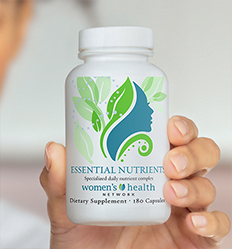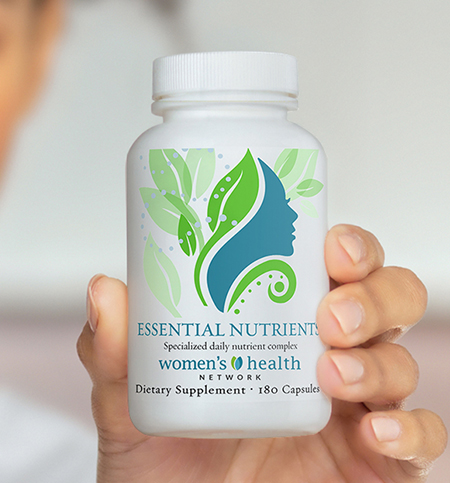By WHN Editorial Team
The basic idea of a multivitamin is simple – it should be good for you!
But what if we told you that lurking in many of the multis that line grocery and health food store shelves are ingredients and processes that do the exact opposite?

It’s tragic but true: many multivitamins don’t provide any real benefits, or worse, actually work against your health goals.
Check the label for these seven “sins” that may be hiding in your multivitamin.
1. “Once-a-day” formulas fit the pill, not the person
When many people begin taking a multivitamin, they often start with that readily available multi that we’ll call “once-a-day.” For very little money, the all-in-one supplement promises to meet all of someone’s daily vitamin and mineral needs.
This whole concept is flawed, mainly because the multi prioritizes cheap ingredients that are completely subpar. For example, many of the key vitamins and minerals in a “once-a-day” are included only in carbonate and oxide forms, which are inexpensive and easy to pack into a pill, but which offer only minimal absorption — as low as 4%! But the whole “dose” is listed on the label, whether you actually absorb it or not. Without absorbability, the vitamins and minerals will simply pass through your system instead of being used. Is it any wonder that many healthcare providers call once-a-day multis “bedpan pills”?
We’re not picking on any particular “once-a-day.” Lots of cheap multivitamins offer almost no bioavailability. The danger, of course, is that you think you are replenishing your body’s nutritional stores when in reality you’re allowing deficiencies to persist.
Additives in cheap supplements that bind ingredients and give pills uniform shape and color are also problematic. Harmful additives that can be found in poor quality multis include hydrogenated palm oil, a trans-fat highly correlated to heart disease, and toxic artificial colorings including FDC Blue #2, Yellow #6 and Red #40, which have been found to disrupt mitochondrial function (the power house of a cell).
2. Food-based vitamins — not enough of what you want and too much of what you don’t want
Now let’s look at the other end of the multivitamin spectrum. Are pricey food-based vitamins better? The short answer: Not as much as you might hope.
The big problem with vitamins sourced from foods is that they tend to have lower potency – the nutrients are more concentrated than in food, but not potent enough to provide a benefit. It can make you feel good that all B vitamins in the multi are sourced from kale and other leafy greens. Sounds natural, right? And natural has to be good, right? But the reality is what you’re getting — even if the label can claim 100% RDA — won’t be enough to make a difference.
To prove the point, let’s look at the ingredients label of a mega popular food-based multivitamin. It provides 400 mcg of folic acid, which we know is a low amount compared to the dose that’s required to provide a real benefit. The multi contains iron, but lacks magnesium — is this a tradeoff to save room? And the Vitamin K is sourced from cabbage, which only provides the K1 form, so you don’t get any Vitamin K as K2, which is the form essential for heart and bone health. The bottom line is that food-based vitamins just aren’t capable of providing complete nutrition.
Other problems with food-based vitamins come from how they are produced. Concentrating whole plant foods also concentrates anti-nutrients, such as phytates and oxalates found in the fibrous parts of plant foods. Phytates and oxalates can block absorption of nutrients, counteracting the benefits of taking a multivitamin. Not only that, but in non-organic preparations, it is frightening to think about the potential effect of concentrating pesticide residues on fruits and vegetables — and then having these residues end up in your supplement.
3. Gummy vitamins prioritize convenience over quality
Gummy vitamins make taking your supplement as easy as popping a piece of candy, which in many ways is all gummy vitamins are – candy.
Gummy vitamins are commonly made from gelatin, corn starch and sugar. Most also contain lots of fillers and chemicals. It’s in the nature of the beast – to make the gummy soft and chewable it needs chemical additives and preservatives. These are often toxic. Beyond this mess, there’s not a lot of room to add much else, so chances are you’re not really getting therapeutically significant amounts of anything when you take a gummy vitamin.
Here’s what else is often lost in the fine print on gummies: The FDA regulates gummy vitamins as food, not as supplements, which means that gummy vitamins are regulated with lower standards for what can and can’t be added. When tested, gummy vitamins have a bad reputation for having less than what the label says.
4. Nothing ever changes
Getting back to those “once-a-day” supplements, the most well known of these cheap multivitamins was formulated 40 years ago, and with a few small tweaks here and there, nothing about the formula has significantly changed since then. Don’t you think we know a lot more about vitamin supplementation in 2024 than we did in 1982? Of course we do – there have been thousands of scientific studies since then that impact formulation.
One quick way to see if your multivitamin is current with the latest research is to check the label for folic acid. If it’s listed as methylated folate, what researchers now recognize as the most active and bioavailable form of folate, you have much greater odds that the makers of your multi are up to date.
Also consider how much the diets of most Americans have changed since 1982! Today most people get plenty of calcium from their diets and don’t need as much supplementation. As bone health expert Dr. Susan E. Brown, PhD said recently in announcing updates to her Better Bones Builder multi-nutrient supplement, “In today’s typical diet, calcium from both dairy and non-dairy sources is ample. Even orange juice can be fortified with calcium! The average person is just not as calcium deficient as once thought. Plus, taking unnecessarily high doses of calcium may contribute to certain negative health effects for women.”
Still, cheap multis love to pack in calcium with a “more is more” zeal, even if most people don’t need it. As we’ve learned more about the health risks around high calcium intake in recent years, it makes the lopsidedness of many multivitamins frankly irresponsible.
5. Missing co-factors make vitamins hit or miss
When consumers browse a multivitamin label they may check for B vitamins, iron, calcium and other “marquee” nutrients without checking for “cofactor” vitamins and minerals that help the starring players work properly in the body. People don’t know, for example, that copper is needed to balance selenium. They may look for calcium and Vitamin D, but not Vitamin K2, because they don’t recognize its important role as a co-factor in the calcium absorption cycle.
In all their slick marketing claims, you will rarely find mention of cofactors. If these cofactors aren’t present, there’s a good chance your multi is not going to work as well as you hoped.
6. Gimmicks without scientific merit
Fermented vitamins are the latest rage in high-end supplements. The key claims are that fermented supplements are easier to absorb and stimulate the immune system. The problem is that advocates of fermented vitamins are transferring the science for fermented foods onto these vitamin supplements – and there’s no just validity for doing this. It is true that fermented foods are generally easily absorbed (they are in effect pre-digested by bacteria) and are proven to enhance immune activity, but there’s no direct extension of those benefits to multivitamin supplements. The claims that these fermented multivitamin producers are making just aren’t substantiated. Great marketing, zero science!
7. Labels aren’t what they’re cracked up to be
In a batch of multivitamins analyzed last year by ConsumerLab.com, 12 out of the 27 supplements tested were found to have quality problems, often having more or less of the vitamins and minerals than their labels claimed. Some also contained detectable levels of contaminants. This is so discouraging for consumers, and seems to support the common critique that “supplements aren’t regulated.”
But supplements are regulated by the FDA. You just need to check vitamin labels for disclosure of manufacturing practices. You want to see “GMP,” which stands for the FDA’s Good Manufacturing Practices, which ensure quality standards. Other signifiers of quality production include “batch tested” and “lab tested.”
We’ve been making multivitamins for 21 years and over that time, have constantly followed the latest research to guide best practices. Of course, GMP compliance costs more, and that’s reflected in the higher prices. But this is just another example of “you get what you pay for.” And if you’re trying to support your health with a multivitamin, why shop in the bargain bin?









